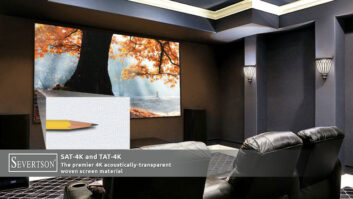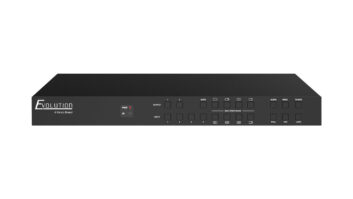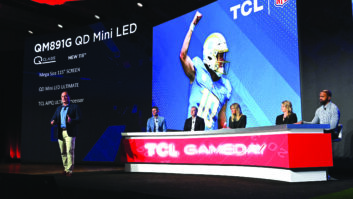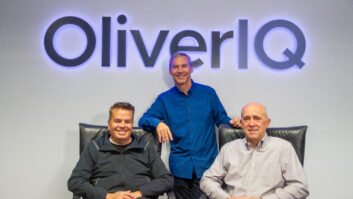LAS VEGAS – As a supporter of the Security Content Storage Association (SCSA), a joint venture VOD service between Technicolor and DreamWorks, M-Go recently became the first to launch a 4K Ultra HD streaming and download service before the holidays through a temporary exclusive with Samsung’s 4K Video Pack.
For an update on how that service is going, TWICE caught up with Arnaud Retureau, M-Go product VP. The following is a Q&A interview from the show.
TWICE: How have you found the 4K service business so far?
Retureau: We have both streaming and downloading, which is great because people with less bandwidth can watch a download and also see 4K. Also we get some exclusivity on the content because Fox, for example, as a member of SCSA, won’t provide streaming but will allow downloading. Meanwhile, on the streaming side, we are getting more and more content from the studios.
What was important for us was to manage the bandwidth. So we launched with HEVC H.265 to make sure we can have the best quality for bandwidth that most people have in their homes. That is typically 15Mbps. We have 15Mbps, but we are able to give 4K to customers — high-quality 4K at 6 or 8Mbps through HEVC.
TWICE: How much bandwidth do you recommend users have to get the best 4K streaming experience on M-Go?
Retureau: We say 20Mbps because you are rarely going to get all of that consistently. We target somewhere between 10Mbps and 15Mbps as being in the very good range, and that will help you enjoy other services as well.
TWICE: How have you found 4K streaming to have done so far? Have you run into many bottleneck issues?
Retureau: For streaming, not too much. The problem with streaming is that we need to convince people that it is physically possible and that it will look right at the rates that are possible. On the SCSA download side, we are still in a soft launch, and there are still a few elements that are being tweaked, but everything seems to be working. At the moment, our biggest challenge is educating people because there hasn’t been a big announcement on SCSA yet. It’s a new paradigm. You need a hard drive and video pack, and you need to start downloading for TV. But we expect it all to come together when people start seeing the quality and what it will bring to people.
TWICE: Where does the M-Go 4K library stand today?
Retureau: At the moment, we have [more than 100] titles — [starting out with] 40 to 45 on the streaming side and 10 or 11 on the download side. The goal was 100 by the end of the year, so it’s been a little bit slower. But we are rapidly adding titles for downloading. We did a soft launch with just five titles, and for Christmas we had six extra titles for download. We are seeing some progression now and the goal on the streaming side is to add one to two titles a day.
TWICE: Which titles are the best at playing up the 4K capabilities?
Retureau: “Immortals,” “Sojourn” and “X-Men: Days of Future Past.”
TWICE:What does M-Go charge for streaming and downloaded 4K movies?
Retureau: For streaming it is about $7.99 for a 4K rental, and on the download side you don’t have rentals. It’s only purchases, and those go for about $29.99 for new releases and $19.99 for catalog titles.
TWICE: Does M-Go have any plans to produce original content in 4K?
Retureau: At the moment, I think we are a little too small for that.
TWICE: What is M-Go’s position on High Dynamic Range and expanded color space in 4K content?
Retureau: Those are things we are looking at introducing into our 4K content. Resolution is the first part of the experience. Luminosity and color gamut are equally important. Our goal is to deliver the quality of content that the panels are capable of presenting. It gets a little more complex because you need more studio approvals than you do with just 4K. When it’s resolution you can just up-scale many times without the need for artistic approvals, but when you start playing with colors and luminosity, additional approvals are going to be required. Those are all things we are looking at to determine how we launch the next phase of UHD.
TWICE: We are already starting to see 8K prototype TVs at the show. When do you think the market is going to be ready for that?
Retureau: (Laughs) I don’t know. I think 4K is already pretty good. When you look at some of the 4K footage we have, it is already so immersive that you can really feel it. I don’t know how much more of a difference my eyes are going to be able to detect.













